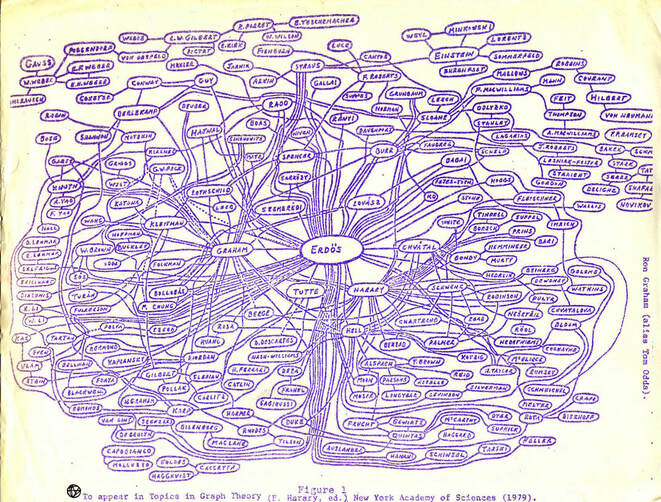My Erdős number is five: for instance, via this sequence of papers:
- Henshaw JM, Jennions MD, Kokko H (2014). Local gamete competition explains sex allocation and fertilization strategies in the sea. The American Naturalist 184(2): E32-E49
- Kokko H, Brooks R, McNamara JM, Houston AI (2002). The sexual selection continuum. Proceedings of the Royal Society B 269(1498): 1331-1340
- McNamara JM, Binmore K, Houston AI (2006). Cooperation should not be assumed. Trends in Ecology & Evolution 21(9): 476-478
- Andersson JM, Binmore KG (1968). Coefficient estimates for lacunary series and Dirichlet series. I. Proceedings of the London Mathematical Society s3-18(1): 36-48
- Anderson JM, Erdős P, Pinkus A, Shisha O (1985). The closed linear span of {Xk – Ck}∞1. Journal of Approximation Theory 43(1): 75-80
Thanks to John Hutchinson for parts of the above sequence. Here is an alternative sequence of length 5:
- Parker GA, Ramm SA, Lehtonen J, Henshaw JM (2018). The evolution of gonad expenditure and gonadosomatic index (GSI) in male and female broadcast spawning invertebrates. Biological Reviews 93(2): 693-753
- Hammerstein P, Parker GA (1982). The asymmetric war of attrition. Journal of Theoretical Biology 96(4): 647-682
- Kuhn HW, Harsanyi JC, Selten R, Weibull JW, van Damme E, Nash JF Jr, Hammerstein P (1995). The work of John F. Nash Jr. in game theory. Duke Mathematical Journal 81(1): 1-29
- Hoffman AJ, Kuhn HW (1956). Systems of distinct representatives and linear programming. The American Mathematical Monthly 63(7): 455-460
- Erdős P, Fajtlowicz S, Hoffman AJ (1980). Maximum degree in graphs of diameter 2. Networks 10(1): 87-90
